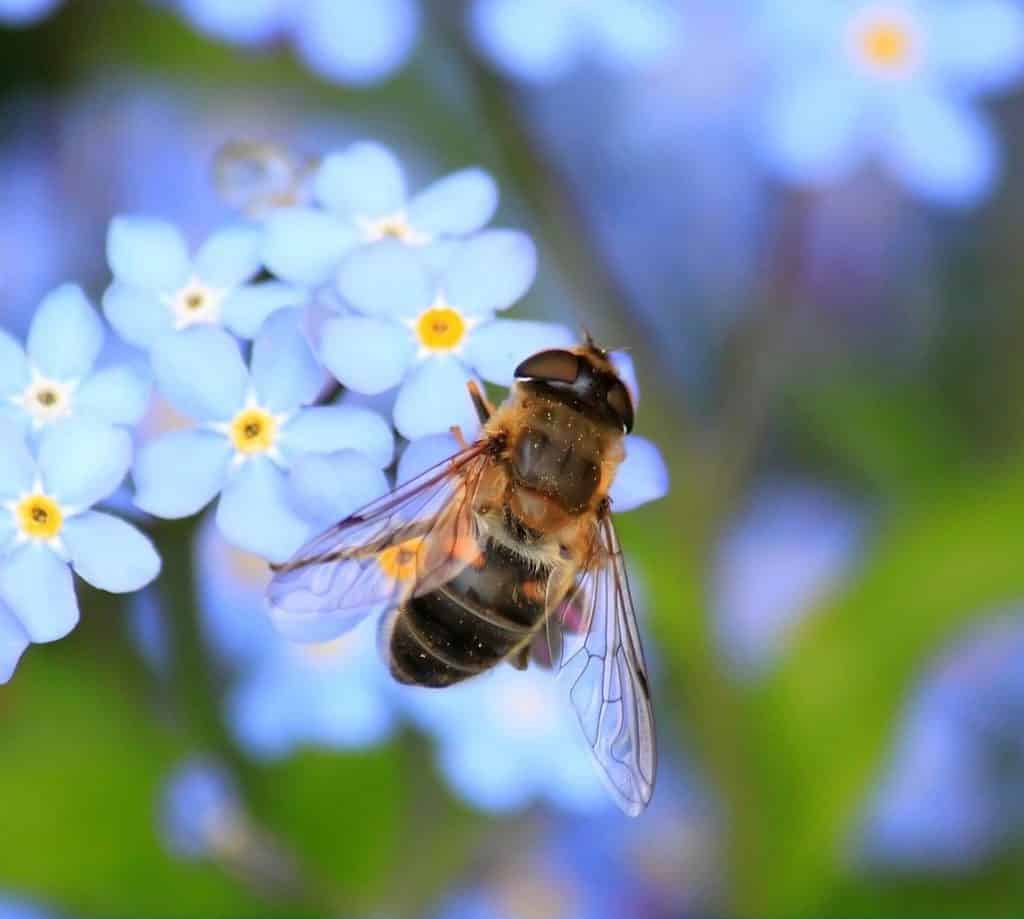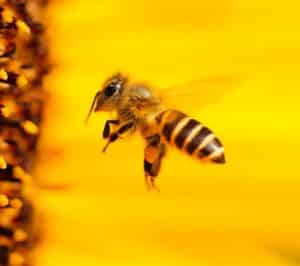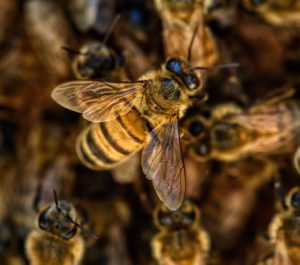
Reno Bee Extermination
Bees gravitate toward flowers, gardens, trees, and shrubbery in their search for plant nectar. Unfortunately, they are stinging insects, and their stings are unsanitary and dangerous. Reno Pest Control Pros offers bee extermination services for times when bee colonies get out of control.
Bees commonly enter your home or business through attics, open windows, garages, or doors. They can form swarms and build irksome nests or hives.
Additionally, bees can chew through plasterboard, wood, and various other materials, especially if they become agitated. Agitated bees who accidentally get trapped inside your home or business can cause extensive damage to your home and property that can be costly to repair. Our bee extermination service will eliminate the risks that pest bees pose to your family.
Call us at (775) 305-3785 or contact us to get your bee extermination started today!
Request Your FREE Consultation!
Common Types of Bees
The most common types of bees in Reno are honeybees, bumblebees, and carpenter bees. While most species of bees are noninvasive and are honey producers essential to our local economy, bees can often become pests. Bees are hardy pests who can survive harsh conditions, and occasionally, other types of bees such as Africanized bees can also appear in Washoe County as an invasive species.

What Bees Look Like
Bees are generally orange and brownish-black in appearance, and carry a large orange and brown, or brown and black stinger from their enlarged abdomens. Unlike other stinging insects, adult bee bodies are mostly covered with pale hairs, which are densest on their thorax. Bees have 6 relatively short legs and a visible stinger with a sharp, skin-piercing barb on the end.
Bees are the smallest of the stinging insects. Adult worker bees range from 1/2 to 5/8 inches long, while queen bees can reach up to 3/4 inch long.
Bee Sting Risks
Bee stings can cause side effects such as pain, irritation, allergic reactions, infections, nausea, and vomiting, and sometimes even death in infants, children, the elderly, and the immunocompromised. Bees and other stinging insects are especially active from midsummer to early fall, and send over 500,000 people to emergency rooms each year.
Never attempt a DIY bee treatment or approach a bee colony, hive, or swarm without first contacting a licensed pest controller or putting on full protective equipment such as a complete bee suit. Only a licensed pest controller should perform a bee extermination. Periodically check for bees and other stinging insects, and have an action plan in place should they appear.
Surviving Bee Attacks
If you are attacked by bees, run for immediate shelter inside a vehicle or a building, and then begin to remove any stingers. If you see someone else being attacked by bees, advise them to seek shelter, but do not assist unless you are in a full bee suit, since angry bees will also attack anyone they think is helping their attacker.

Bee Sting First Aid
If you are providing first aid to someone who has experienced a bee sting, the first step is to quickly remove the stinger. When removing the stinger, avoid pinching the stinger with tweezers or pliers but pop it out with something solid and flat like a credit card.
After removing the bee stinger, do not pierce, rub, or scratch the affected area, since that causes the venom from the sting to spread. Once the stingers have been completely removed, remove all contaminated clothing. Cleanse the site of the sting with soap and warm water, and apply an antiseptic and a cold compress to reduce pain and swelling. If stung multiple times, remove all stingers before washing the affected areas.
Anaphylaxis
If the bee sting victim was been stung more than 10 times, is feeling nauseated or ill, or if the reaction is more swollen than a small skin welt, seek immediate medical attention. In situations where a person’s immune system overreacts or underreacts to bee stings, anaphylaxis can cause unconsciousness or death.
Bee Extermination Services
Pest Bee Treatments
To achieve the best bee extermination results during our bee treatment, we apply special-purpose insecticides such as Stryker Bee, Wasp, and Hornet Killer or Stryker 54 to kill the entire bee colony, including the queen bee. Depending on the species of bee, we may also apply other effective pesticides such as Tempo Dust or PT Bee, Wasp, & Hornet.
For indoor infestations, we may choose to apply Stryker 54, LambdaStar Ultra Cap 9.7, PT 565, D-Fense Dust, or Cyper WSP instead.
Bee Prevention
Bees are not naturally inclined to be aggressive, even when they swarm. They will not attack unless they feel trapped or threatened. Bees are defensive animals and will attack only if they feel that their colony or hive has been threatened.
To prevent bee infestations, ask your exterminator to look for and eliminate undesirable potential or actual hive locations. If beehive locations are properly managed, bees will leave you alone.



